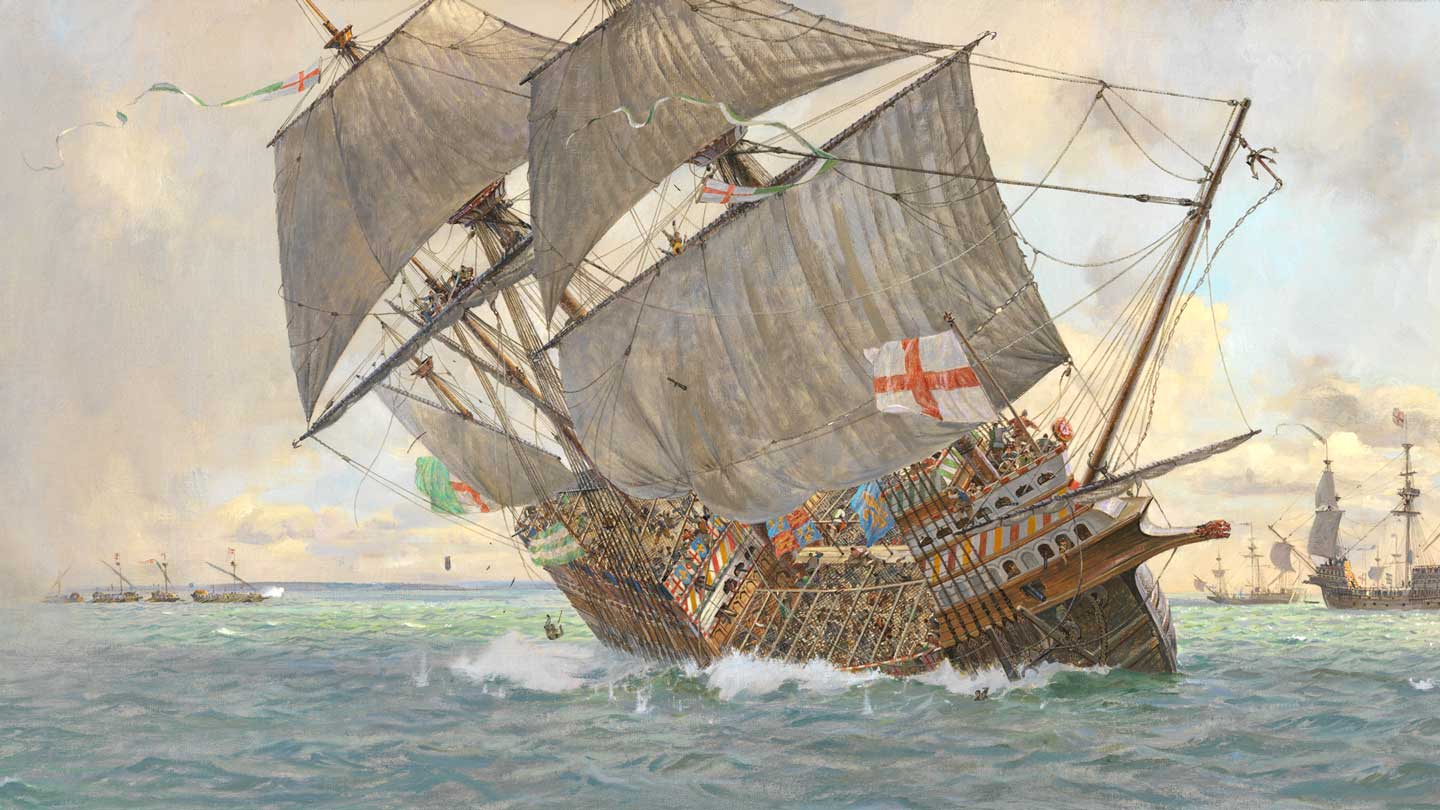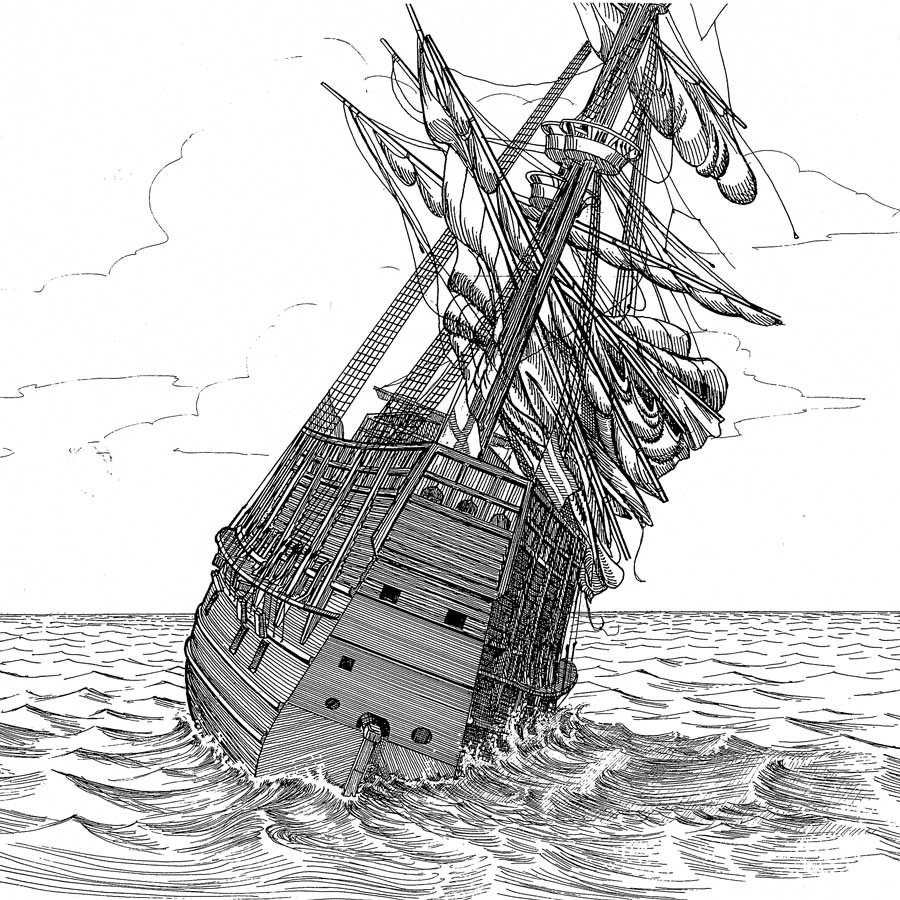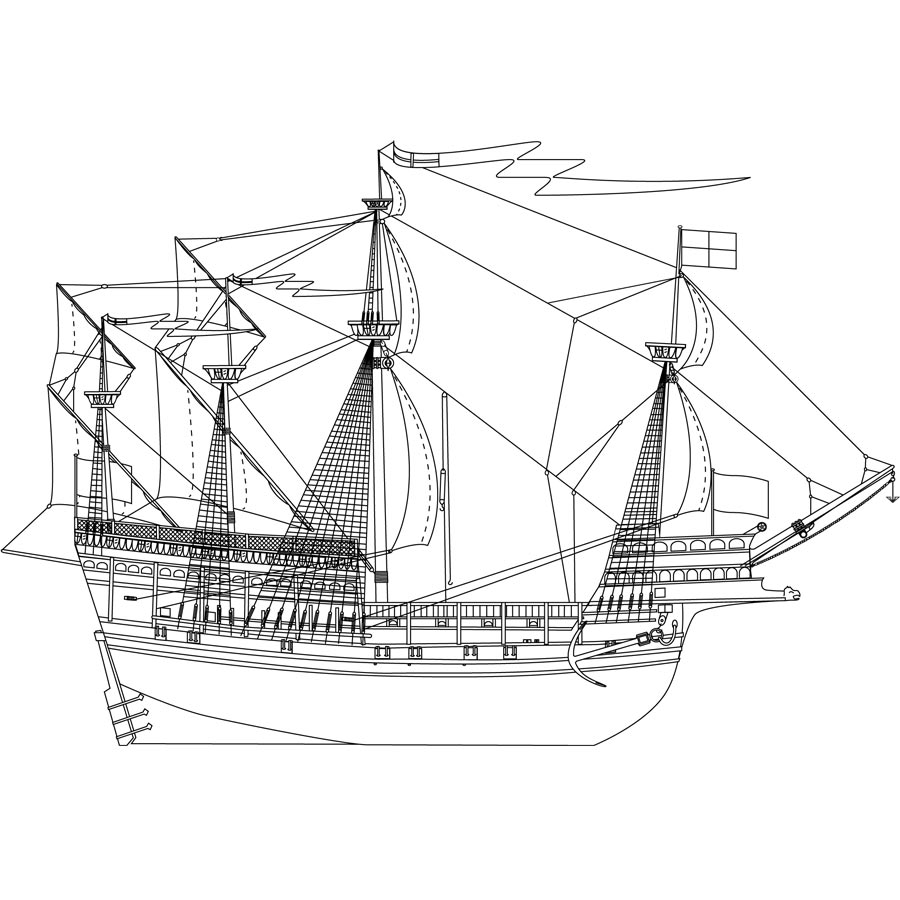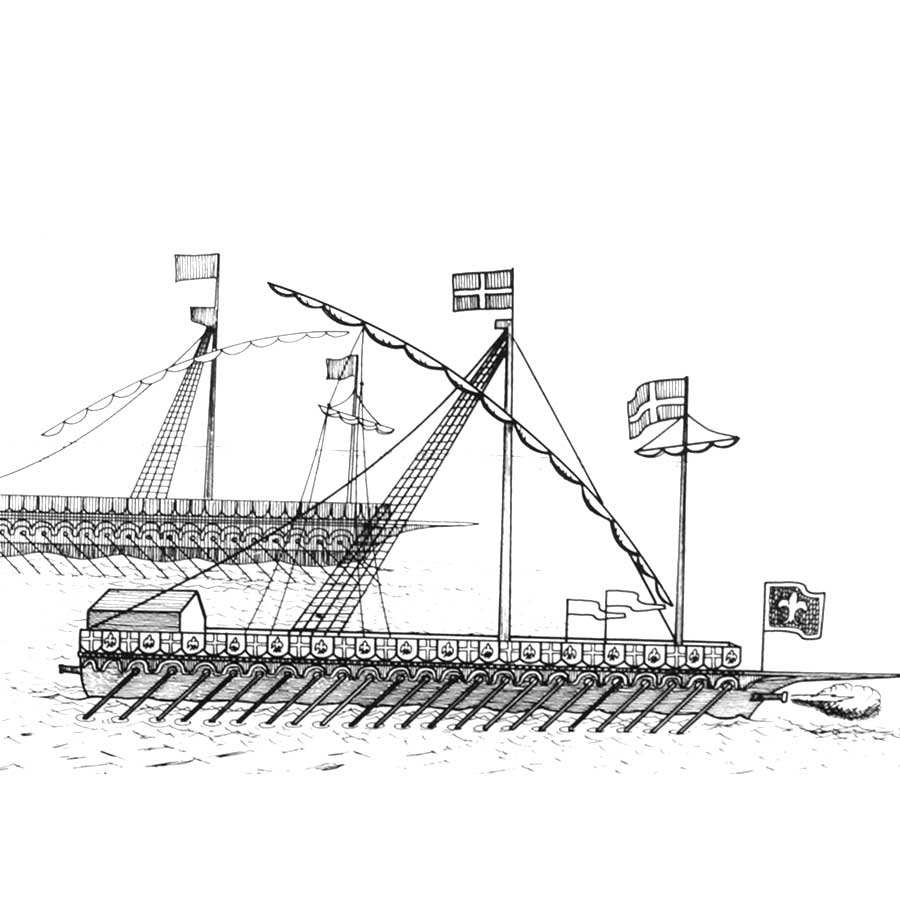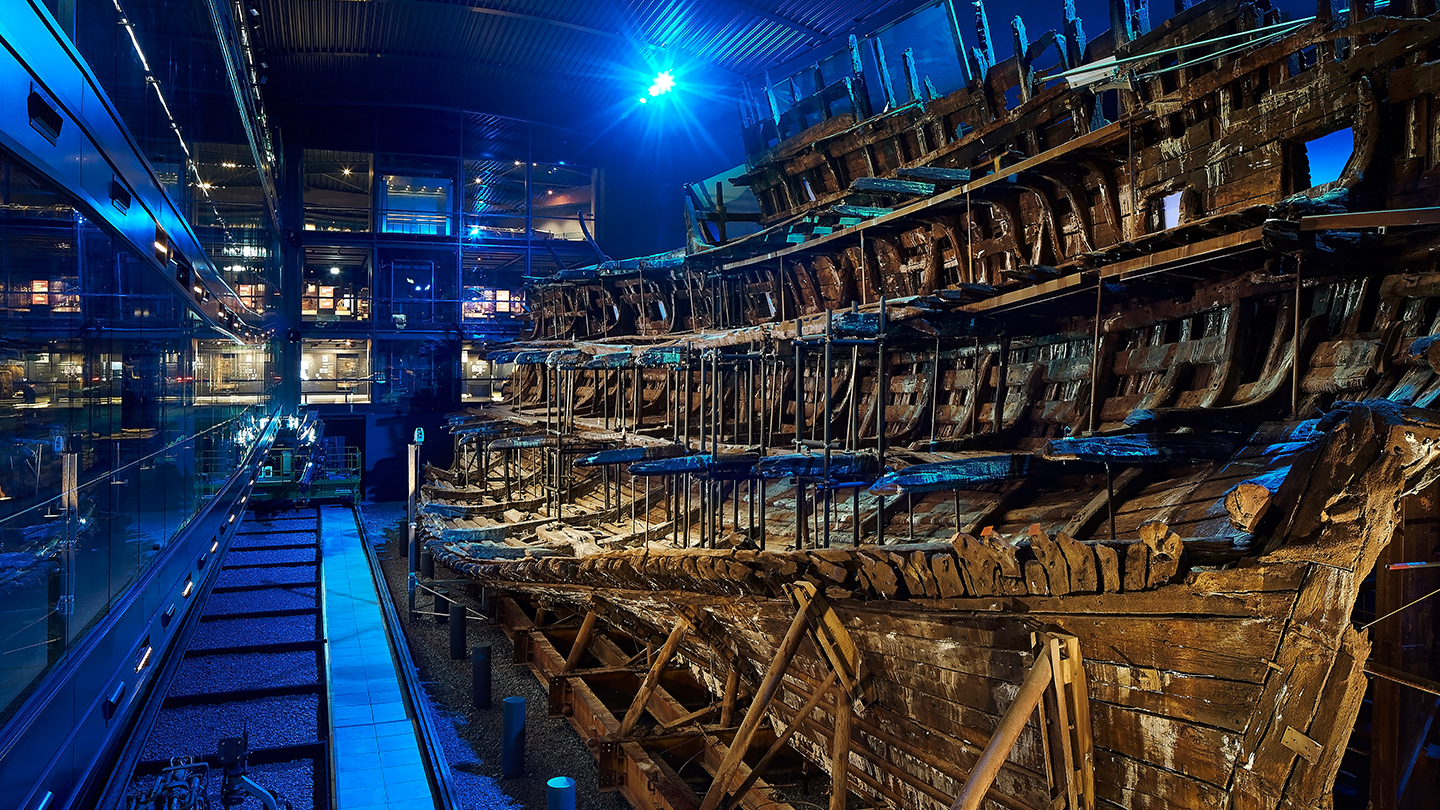What happened on that fateful day, 19th July 1545?
The Mary Rose sank during the Battle of the Solent, a confrontation between French and English troops on the Isle of Wight, as well as a face-off between their respective fleets in the Solent between the Isle of Wight and Portsmouth.
The only confirmed eyewitness, a Flemish sailor who escaped from the sinking vessel, claims that the Mary Rose had fired all her starboard side guns and was turning when her sails were caught in a strong gust of wind, pushing the gunports, which had been left open, below the waterline.
A few days later, on 24th July 1545, the Imperial Ambassador, Francois Van der Delft, wrote to the Holy Roman Emperor, Charles V, explaining what had happened in the battle:
Next day, Sunday [19 July], while the King was at dinner on the flagship, the French fleet appeared. The King hurriedly left the flagship and the English sailed to encounter the French, shooting at the galleys, of which five had entered the harbour while the English could not get out for want of wind. Towards the evening the ship [the Mary Rose] of Viceadmiral George Carew foundered, all the 500 men on board being drowned save about 25 or 30 servants, sailors and the like. Was told by a Fleming amongst the survivors that when she heeled over with the wind the water entered by the lowest row of gun ports which had been left open after firing. They expect to recover the ship and guns…
Other accounts agree that she was turning, but there could be several reasons why she sank during this manoeuvre.
Below we present a few of the most common suggestions.
